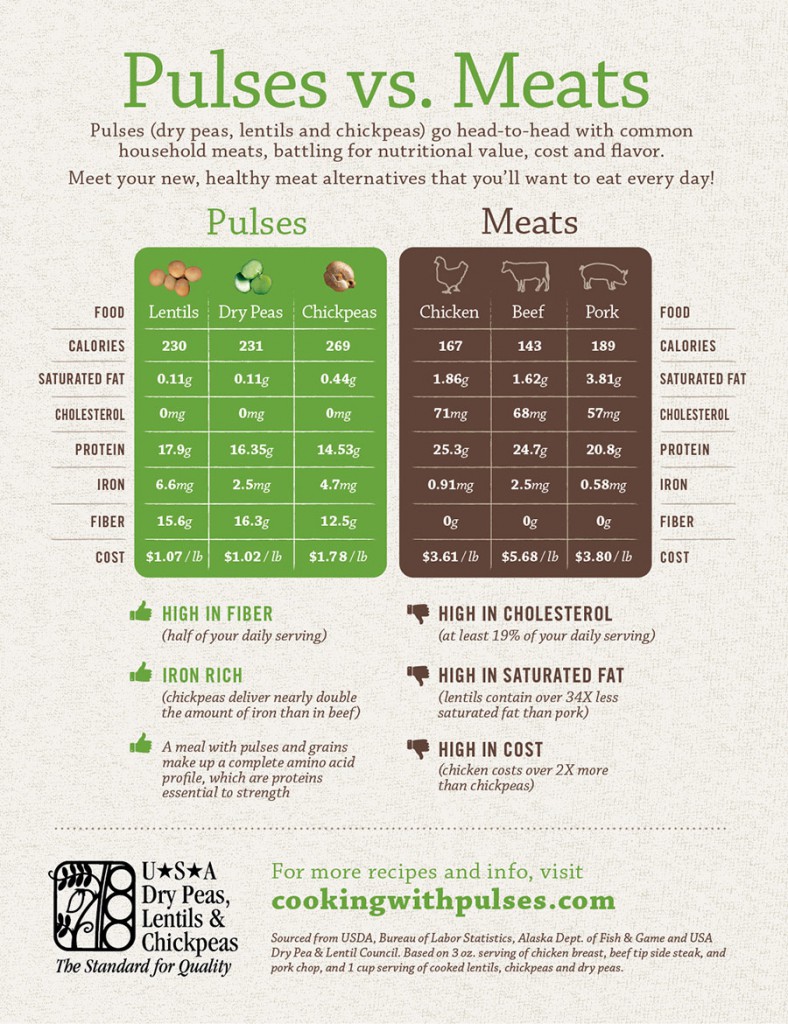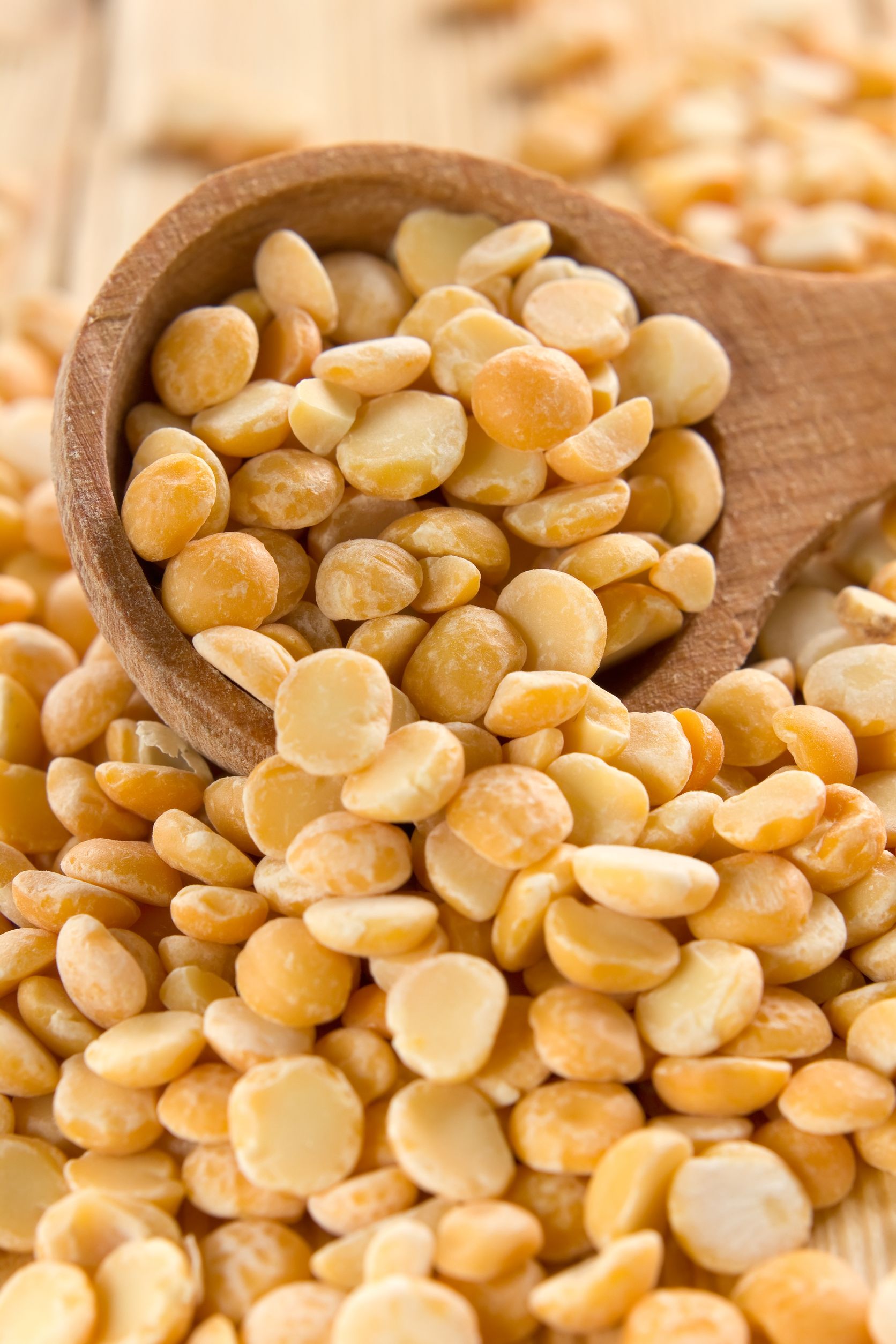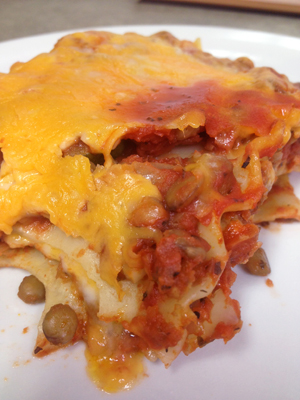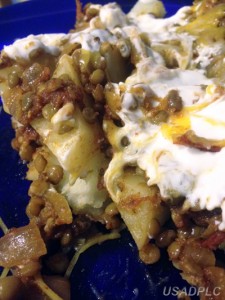Here at the USA Dry Pea and Lentil Council we are focusing on Plant Protein for the month of April. Protein is one of the essential nutrients that all of our bodies need plenty of on a daily basis. And what better way to pack a meal with protein than to include a serving of pulses? One cup of the pulse of your choice on average provides up to 25% of our daily recommended protein! Not to mention that because of their high fiber content they keep us fuller, longer! All the more reason to substitute some plant protein into our regular diet!
Still not convinced? Here are 5 reasons why plant protein is better than animal protein:
- Meat is far more expensive than pulses. Chicken tends to be a cheaper option in purchasing meat, but is still 2X as expensive as chickpeas!
- Consumption of animal protein is most often related to high levels of cholesterol, a compound that contributes to cardiovascular disease. Not to mention the recent studies verifying dangerous levels of carcinogens in processed red meat!
- Pulses are quite versatile in acting as a meat replacement. Recipes like lasagna, burgers, enchiladas, and nachos can all be prepared with pulses, rather than meat! (And we have a recipe for each of these here on our blog!).
- Pulses are packed full of vitamins, minerals, and fiber. Not to mention the minimal to absent levels of saturated fat and cholesterol!
- Meat only keeps in the refrigerator and freezer for so long, while pulses can be stored for months in the pantry! That, and once they are cooked they can also be kept in the fridge for use later in the week!
The proof is in the pulses!









Celiac Awareness Month puts a Spotlight on Gluten-Free Pulse Flours
At first glance, the term “gluten-free” might spark associations of the latest trend or fad diet. But for many Americans, gluten-intolerance (Celiac Disease) or gluten-sensitivity can pose a serious health threat (and serious FOMO on an array of baked goods). Fad or not, the growing awareness of gluten-intolerance and gluten-sensitivity has resulted in a broader availability and variety of gluten-free products and recipes.
This is where pulses come in, offering a variety of flour alternatives that can be used to recreate gluten-free (and more nutritious) versions of your favorite meals, breads and other baked goods.
Whether you’re gluten-sensitive, health-conscious or just plain curious, pulse flours can be easily substituted into nearly any recipe to boost the fiber, protein and nutrient content of the dish.
Not sure how to substitute pulse flours for other common flours? Stay tuned! Next week, we’ll sit down with Richard Coppedge Jr., a Certified Master Baker (CMB), author and professor at The Culinary Institute of America (CIA). Richard specializes in gluten-free baking and instruction, and he’ll share some expert insights and preparation tips for baking with pulse flours.